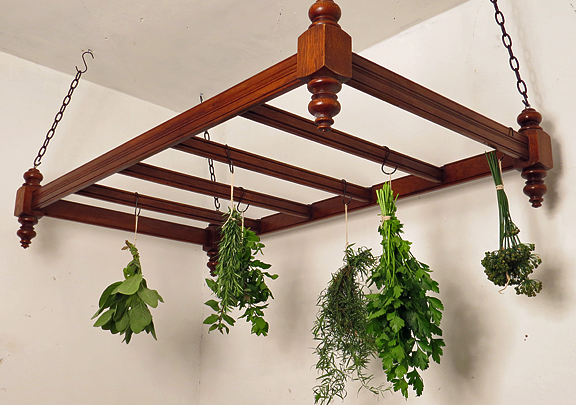
Herbs first were introduced into cooking not to flavor foods, but to disguise flavors. Before refrigeration, frequently meat was served past its “freshness date”. Strong-smelling herbs worked hard to make what was on your plate palatable. Phew!
Aromatic dried herbs and flowers also were used to disguise human smells. When bathing was to be tolerated only once or twice a year, the generous application of anything with a pleasant smell was considered a welcome corporeal addition. Double phew!
But the primary use for dried herbs was in medicines.
One hundred – fifty years later, we’ve come full-circle. Most recently the province of cooking pots, hanging racks now are in demand as the perfect place to dry herbs and flowers. Coincidentally, that’s just what they were designed for originally. If you are a discerning cook who appreciates the nuances of great flavor, these are the ten dried herbs you should have hanging over your head: oregano, thyme, rosemary, sage, parsley, mint, fenugreek, basil, tarragon and dill.
Right now is the time to pick them, bunch them and hang them up to dry. As winter sets in, you’ll appreciate these flavorful herbs every time you reach for a handful. Plus, this beauty, made in the mid-19th century, will look exquisite fulfilling its original function. Anthony Bourdain might even approve.
Shown above:
Date/Circa: 1900
Size: 54″ long by 32″ deep
